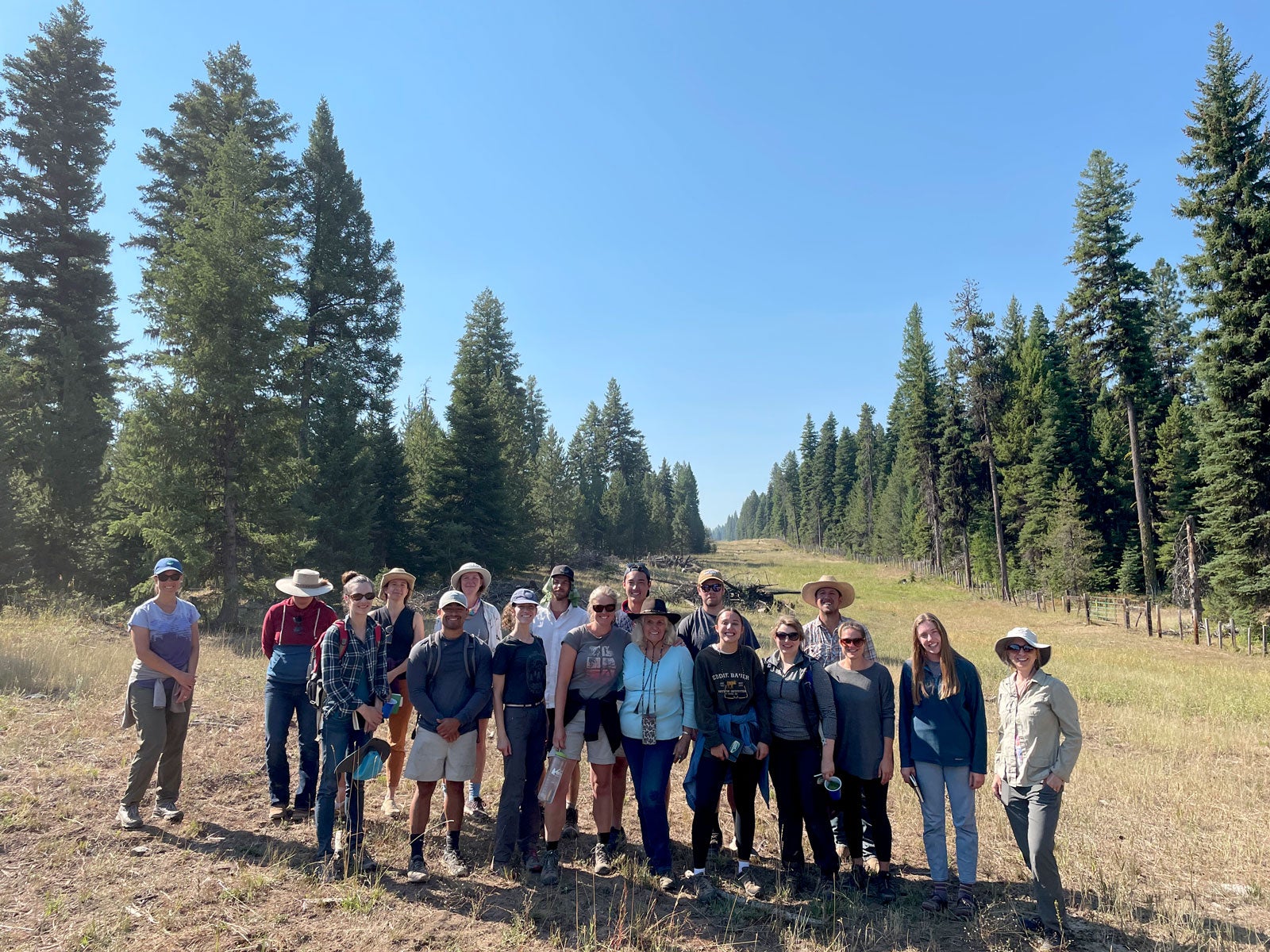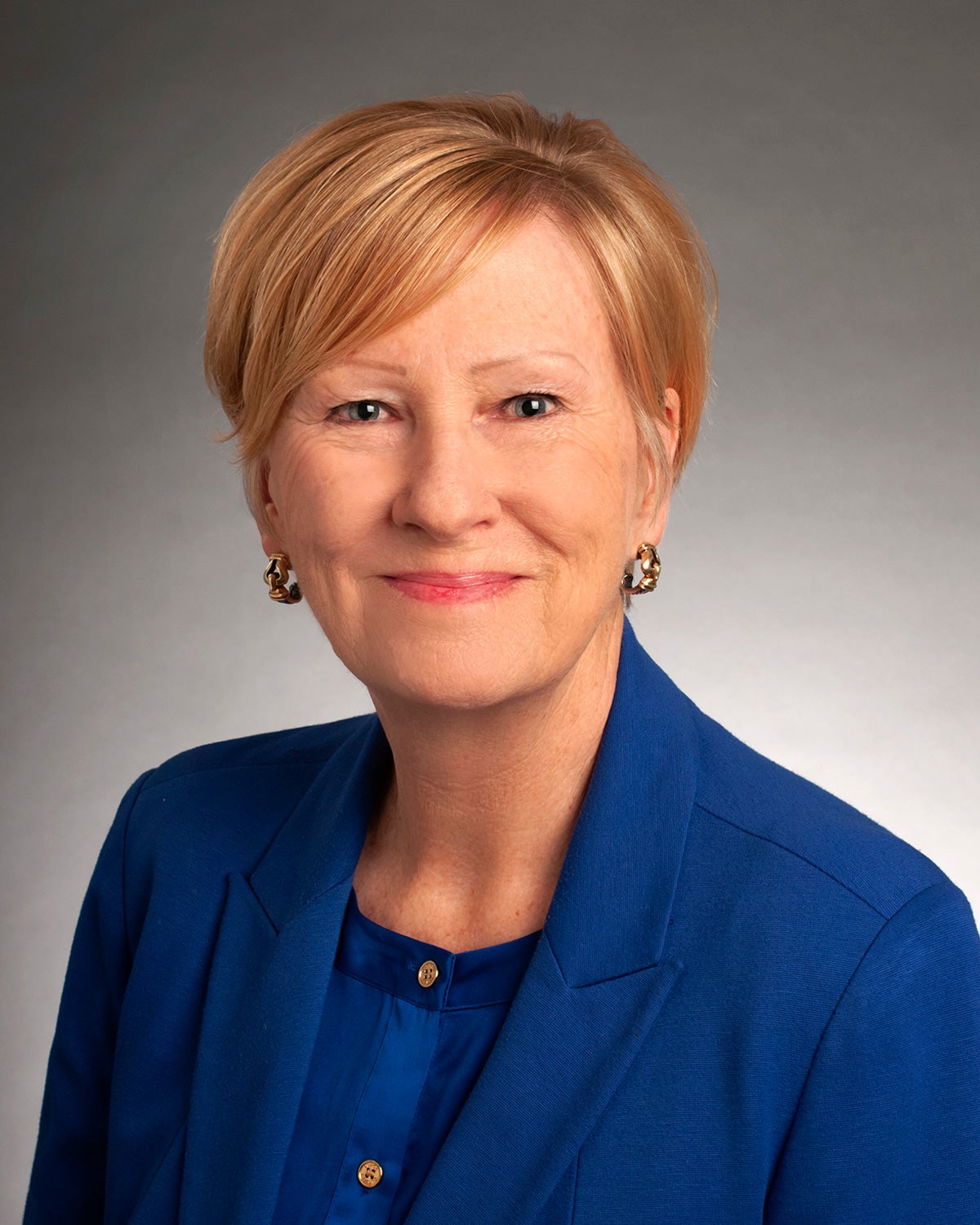
Bronco students get a look at environmental issues through each others’ eyes during pilot Field School experience.
Carol MacGregor’s all-terrain vehicle came to a stop in the clearing where, for the last few days, she had hosted a cohort of Boise State University students and faculty. Surrounding the site were tall trees, a gurgling stream and a circle of camping chairs where her guests heard her talk about her life as an academic, writer and rancher.
“We really need to encourage new leadership for cleaning up and preserving what we’ve got, and maintaining it for habitat, for wildlife, for grazing, for recreation,” MacGregor said. “My hidden agenda is that I want to expose young people of ambition and energy to the actual situations — to motivate them to take better care of it in the future.”
The clearing and other areas on MacGregor’s land near Cascade Reservoir in Valley County were the sites of the first-ever Working Lands Field School, which took place over five days in mid-August, 2021, three of which were spent on her land. As Boise State gears up to launch its School of the Environment, which will create a hub for disciplines and areas of study around the environment, the field school demonstrated the possibilities of interdisciplinary study and Boise State as a leader on environmental issues. A pilot project designed to build connections across academic disciplines, the field school also brought participants together with those who use the land for their livelihoods, fostering conversations and insights into resource management, conservation management, fire prevention, biology, history, law and more.
The field school attracted people from various disciplines, bringing faculty and students in from the School of Public Service, the College of Arts and Sciences, and Human-Environment Systems within the College of Innovation and Design. They came with myriad areas of expertise, including soil biology, geography, history, philosophy, botany, ecology, political science, public policy, biology and environmental studies.
Emily Wakild, a professor of history and the director of environmental studies at Boise State, as well as the driving force behind the organization and execution of the field school, said everyone has something to offer when it comes to conservation. Studying the use of the land while breaking down academic barriers helps students reach a new understanding of how to solve environmental problems.
“When you can think about the way ranchers know the land, you can understand their philosophical view in a different way. It’s the same with history, the legacy of how the landscape looks. It’s embedded in legal choices that were made generations before. By considering these choices collectively we learn with and from each other. Some of us here have had no interaction until we came up here.”
Emily Wakild</cite Students were able to interact with others across a variety of disciplines and levels of educational attainment. Undergraduates mingled with Ph.D students and professors. Among them was Abby Sasso, an undergraduate student majoring in biology. Sasso grew up in Boise, but said she has seen little of Idaho beyond the City of Trees. Trips to places like the field school’s location, she added, are exciting and illuminating. The activities at the field school were hands-on. They included soil testing and examinations of natural, working and transitional lands, as well as conversations and lessons on a variety of scientific, practical and social-scientific topics. Sasso was also impressed with her interactions with her fellow Broncos, some of whom she would have barely known had she not participated in the field school. “I’ve noticed more than anything the interdisciplinary approaches, but also having faculty interact directly with graduates and undergraduates, and across programs,” she said. “Even though these things are related, it’s very easy for people to get focused on their own programs, even though they’re all connected. This is a place where we don’t have to be siloed.” Ph.D student Mackenzie Case, who specializes in environmental policy and administration, said the location of the field school was an important part of the experience. Tucked into the hills near the western shore of Cascade Reservoir, it included a mix of working and natural areas that allowed participants the opportunity to explore land uses and environments as they learned about them. “There’s a lot of experimenting, intentional or not, going on in this land. We’ve been able to see that. And the fact that it borders on a national forest, we’ve been able to see that too, at least visually see the differences and make conclusions,” she said. “I think the structure offers a variety of different experiences and topics, and we’ve covered everything from wildfire management to the social aspect of land management, learning how different cultures and individuals view the land, at least from an academic standpoint.” The atmosphere of sharing and understanding went beyond participants from the Boise State community. On the final day of the field school, students participated in a series of activities and talks with Monica Gokey, a former news correspondent who turned to a life of ranching and cattle-herding. A major part of her presentation was about the social divide between urban and rural areas, and how students, academics and others can work with people from different backgrounds to achieve economic, policy and research goals. “Right now, you’re dipping a toe into the urban/rural divide,” she said. “You come from an urban area into a rural area. You’re going to rely on expertise from people who know the land really well, and they may be culturally different.” MacGregor played an active role in the experience, discussing with participants how she manages her land and her lessons learned from being a rancher. MacGregor has stewarded her ranch for nearly four decades; and a longtime supporter of Boise State, she said she would continue to host the field school for as long as she is able. She’ll do that, she said, to show young people rural Idaho from every possible angle and inspire them to make a difference. “If you’re going to study ecology, experience is a very important part of it,” she said. “They shouldn’t just learn from books: They’re going to have to learn through experience, and that’s what this was set up for.” Make a Gift to the School of Public Service.
Inspired? Let's Chat!
-

Jennifer Neil, CFRE
Senior Executive Director of Development